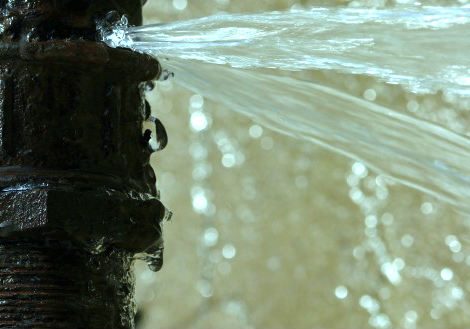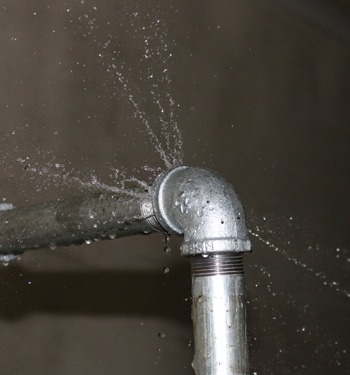Burst Pipes? No Panic! Just how to Detect and Fix Rapidly
Burst Pipes? No Panic! Just how to Detect and Fix Rapidly
Blog Article
Are you currently on the lookout for selective information around What to Know Before Installing a Dishwasher?

A burst pipeline is a significant emergency; you can only stand as you see water you pay dearly to reunite with the planet. In worse cases, you discover a swimming pool on your kitchen flooring, which is a fantastic trip threat, particularly if you have kids around. If the pipeline that burst remained in your walls, problem: you might require to repaint that entire area.
Exactly how can a catastrophe like a ruptured pipe be avoided and also taken care of? Well, by listening to your expert emergency plumbing technicians and adhering to these guidelines.
Exactly how do I recognize when my pipes have burst?
Changing water stress
Pipes do not just burst in a day. You might have noticed that your kitchen faucet or shower does not run right away when you transform the tap. It might stop for a few seconds and then blast you with more force than typical.
In other instances, the water may appear typical in the beginning, after that decrease in stress after a couple of secs.
Infected water
Many people assume a burst pipe is a one-way outlet. Quite the contrary. As water flows out of the hole or gouge in your plumbing system, contaminants find their way in.
Your water may be contaminated from the source, so if you can, inspect if your water storage tank has any type of troubles. Nonetheless, if your alcohol consumption water is supplied and purified by the local government, you should call your plumber instantly if you see or smell anything funny in your water.
Puddles under pipes and also sinks
When a pipeline ruptureds, the outflow forms a pool. It might show up that the pool is growing in size, and no matter how many times you wipe the pool, in a couple of mins, there's one more one waiting to be cleaned. Often, you may not have the ability to map the pool to any type of noticeable pipelines. This is an indicator to call a specialist plumber.
Damp wall surfaces as well as water spots
Before a pipe bursts, it will leak, the majority of times. If this relentless leaking goes unnoticed, the leak might finish into a vast tear in your pipe. One easy means to prevent this emergency is to watch out for wet wall surfaces advertisement water stains. These water discolorations will certainly lead you right to the leak.
Untraceable dripping noises
Pipeline ruptureds can occur in the most unpleasant places, like within concrete, inside wall surfaces, or under sinks. When your house goes quiet, you may have the ability to listen to an annoyingly relentless leaking noise. Also after you have actually examined your shower head as well as kitchen faucet, the dripping might continue.
Dear visitor, the dripping might be coming from a pipe inside your wall surfaces. There isn't much you can do regarding that, except tell a specialist plumber.
Turn up the Heat
Establish fans to blow heat into cold areas. Keep the garage door shut. If you have lowered water flow, heat one of the most vulnerable pipelines (usually in cellars and crawl spaces or near outside wall surfaces) with a hair dryer. Leave the tap on while you apply warmth. As you melt ice, the circulation will boost. To prevent pipelines from freezing, protect your walls.
Begin Getting Rid of the Water
Get the wipe, containers and a store vacuum to start to remove the water since you absolutely don't desire it soaking right into everything else in your home. And also, a fast clean up will certainly reduce the possibilities of something getting musty.
What do I do when I spot a ruptured pipe?
Your water meter will certainly continue to run even while your water wastes. To decrease your losses, discover the major controls and also turn the supply off. The water pipe are an above-ground framework at the edge of your home.
How to Fix & Detect a Leaking Pipe
How Do I Know if a Pipe is Leaking?
Leak detection tests can help you determine if your pipe has a leak. Even if you don’t see an apparent leak, you should still conduct leak detection tests regularly to save water and money—and prevent major damage to your home.
Water meter. It can be helpful to figure out what your usual water meter usage numbers are and then monitor them regularly. To monitor your meter, first, turn off all water faucets in your home. Check the meter and write down the numbers. In a few hours, check the meter again. If the numbers have changed, you have a leak. Water gauge. Use a water gauge to test your water pressure. Your showerhead should produce a certain amount of water pressure based on its model and design. If the pressure is lower than it is supposed to be for that specific showerhead, your home likely has a leak. Puddles. Look inside your bathroom, laundry, and kitchen sink cabinets. Puddles around the cabinets or around toilets, tubs, showers, and washing machines indicate the presence of a leaking pipe. You may also notice loose tiles, peeling or flaking paint, or mold caused by water accumulation. Napkin test. Even if you don’t see any puddles, you may still have a leak. You can test for water leaks in the bathroom, laundry, and kitchen by wiping below-sink connections with a napkin, paper towel, or piece of toilet paper. If it becomes damp, you probably have a leaking pipe under the sink. Discolored walls. Walls that are discolored—usually with brown or yellow stains—or bulging might mean that they have been impacted by water damage caused by a leaking pipe. Smell. A leaky pipe will create sitting water, and over time, that water may develop a musty smell. If your home smells musty, but you can’t locate the source, it may be due to a leak. Steps for Fixing a Leaking Pipe
A leaky drain can be remedied by tightening the pipe base, replacing the drain seal, caulking the rim, and tightening the pipe nut. Similarly, a leaking toilet pipe can be treated by tightening the packing nut. You may also need to replace the valve. A leaky faucet may just need tightening or replacement of the washers. If that doesn’t work, consider replacing your faucet. If your pipe has a hole in it, you may want to use a pipe leak sealer or pipe leak tape. This quick fix for water pipe leaks can also temporarily fix a copper pipe leak. https://www.ahs.com/home-matters/quick-tips/how-to-tell-if-pipes-are-leaking/

We were made aware of that editorial on How to Prepare for Your Dishwasher Installation from a good friend on our other web property. Do you know anybody else who is involved in the subject? Take a moment to promote it. We thank you for reading our article about What to Know Before Installing a Dishwasher.
Contact
Report this page